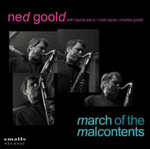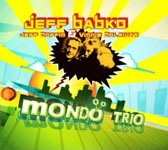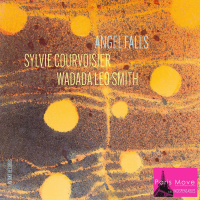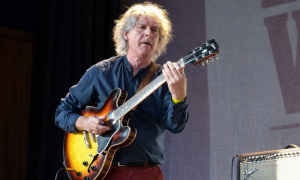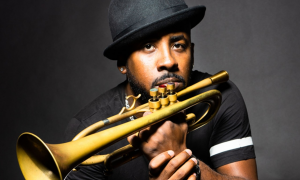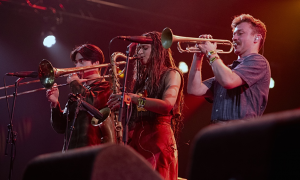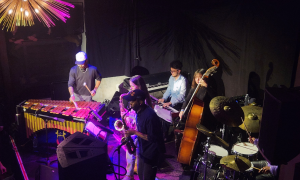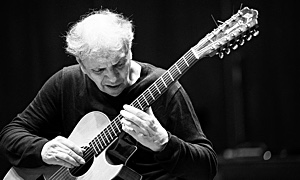Home » Jazz Articles » Live Review » Montreal Jazz Festival Day 9: July 6, 2007
Montreal Jazz Festival Day 9: July 6, 2007

As the 2007 Festival International de Jazz de Montreal entered its home stretch, two performances demonstrated the eclectic diversity of jazz—one, an exploration of the nexus between world music and jazz, the other a cutting edge performance that pushes the limit of the modern mainstream. Such ventures are de rigueur for a festival that, while generally focused on jazz, views music as a larger continuum that includes liberal doses of blues and world music in addition to contemporary influences like hip-hop, ambient and electronica. Some artists may appear to have tenuous connections to jazz but are, in fact, linked when surprisingly small degrees of separation reveal an unexpected common ground. It makes for exciting discoveries as audiences get the opportunity to experience a wealth of musical styles that are in some cases familiar, in others completely new.
The diversity is also about drawing in a younger demographic—a challenge facing all festivals—in ways that appeal while, at the same time, providing exposure to music that might otherwise go unheard. At most of the indoor ticketed shows and certainly at all outdoor free performances one is likely to see audiences ranging from preteens to octogenarians. It's an encouraging sight, a reminder of the only way much of the music presented at festivals like FIJM will remain vital and alive while evolving.
Richard Bona Dialogues en Musique
For his third Invitation Series performance bassist/vocalist Richard Bona augmented his keyboards/ drums trio with three guests—Benin-born guitarist/vocalist Lionel Loueke, American mainstream guitarist Russell Malone and Malian Kora master Toumani Diabaté. All three guests have their own shows at the festival, and provided Bona with a multiplicity of musical contexts that made for an entertaining and enlightening performance.
Loueke is a rising star who has been performing regularly with Terence Blanchard, Herbie Hancock and Wayne Shorter. Virgin Forest (ObliqSound, 2007), is an innovative record that combines his cultural roots with jazz-centric improvisations and creative use of looping.
Malone has been steadily building his own body of work, including two live discs for MaxJazz, Live at Jazz Standard Volume One (2006) and Volume Two (2007), in addition to working with artists including Harry Connick Jr., Branford Marsalis and the late Ray Brown.
Diabaté's connection to jazz is less direct, although his record with trombonist Roswell Rudd, MALICool (Sunnyside, 2004) demonstrated his virtuosic improvisational ability on the difficult-to-play 21-string harp-like kora. While remaining largely in the world music sphere, he has appeared on recordings by BjÃrk and Taj Mahal.

Bona opened with a short set, featuring two original compositions and a stunning bass introduction to Jaco Pastorius (to whom he paid tribute on his opening Invitation Series performance on Day Seven) and his classic jazz waltz, "Three Views of a Secret." He instantly established a connection with the audience; he's a relaxed performer whose between- song patter in French had the audience thoroughly engaged throughout. A technically stunning player with a voice to match, he kept the first part of the set soft and gentle, drawing the audience in rather than pushing out assertively.
With Bona's trio exiting the stage, Loueke's brief and largely duo set with Bona, was remarkable in its ability to combine West African music with a well-developed jazz vernacular. On their first tune together, with Bona on classical guitar alongside Loueke, there was an instantaneous rapport. The two freely alternated between accompanist and soloist duties, pushing the folkloric music to unexpected and, at times, slightly outré places. Still, there was a playfulness throughout that captivated the audience. While Loueke's recordings are strong, in many ways his work with others has been the place where his true breadth and abilities has been most evident. The only problem with this kind of encounter performance with multiple guests is that there's never enough of any one artist. Still, those unfamiliar with Loueke left the performance with another artist to investigate.
Malone's mainstream proclivities drove his set with Bona. Opening with an 11/8 version of Miles Davis' classic "All Blues," the guitarist proved a perfect foil for Bona's virtuosic tendencies. Both players not only took exhilarating solos on a tune that proved it is, indeed, possible to swing in an odd meter, but interacted in a remarkable way that would suggest the two have been playing together for some time, despite the knowledge that it's not the case. Malone, at times, employed a Pat Martino device of taking a simple motif and building the tension through repetition so that, when he broke from the pattern, there was a palpable sense of relief from the audience.
While Diabaté's performance was missed in order to make it to Le Spectrum for Ravi Coltrane, the nearly ninety minutes of Bona's Invitation Series show remained an accessible and entertaining show that was a significant improvement over the Jaco Pastorius Big Band collaboration two days earlier.
class="f-right">
Charging out of the gate at a fast clip, saxophonist Ravi Coltrane and his quartet—pianist Luis Perdomo, bassist Drew Gress and drummer EJ Strickland—demonstrated the kind of take-no-prisoners collective intuition that only develops from working together on a regular basis. The quartet was featured on Coltrane's In Flux (Savoy Jazz, 2005), but the son of saxophone legend John Coltrane and recently departed harpist/pianist Alice Coltrane delivered a stunning first set that mixed original compositions with sourced material well- and lesser-known.

Coltrane opened with trumpeter Ralph Alessi's "One Wheeler Will," a fiery tune written for the saxophonist's son. It immediately established the modus operandi for the first set—spectacular interplay, muscular yet always focused solos and, in Coltrane's case, a developing personal sound that has little to do with his late father and more to do with the tone and approach of saxophonists Joe Henderson and Wayne Shorter. The entire band was impressive, from Perdomo's empathic support to Gress' robust anchor and Strickland's loose but powerfully interactive connection to his band mates. It was a terrific opening that provided strong solo opportunities for everyone
Coltrane drew on his father's vast repertoire for a relaxed take on the late saxophone icon's "Narcine," a song that was not only a debut for Ravi on his first album, Moving Pictures (RCA, 1998), but a recorded debut for the song itself, which hasn't appeared on any of his late father's releases. It may have been less of a barn-burner than "One Wheeler Will," but it still featured a particularly centered solo from Perdomo, who's an equally rising star on his own Focus Point (RKM, 2005) and Awareness (RKM, 2006). Gress was equally focused, combining the kind of purposeful construction that made his own 7 Black Butterlies (Premonition, 2005) one of the best releases of that year.
A rearranged version of Thelonious Monk's classic "Epistrophy" may have opened up to a solo section that swung more concertedly, but Coltrane's reworking of the familiar theme remained, in its idiosyncrasy, true to Monk's own eccentricities. Coltrane's solo was impressive in its stretching and twisting of the song's core while never losing site of it. A nuanced yet dramatic look at Coltrane's rubato tone poem from In Flux , "For ZoÃ,"" presented an even freer side to the quartet, with an approach that, while fundamental to the group at all times, was especially liberal here due to the open-ended nature of the tune itself.

l:r: Luis Perdomo, Drew Gress, Ravi Coltrane, EJ Strickland
Closing on a more energetic note, Coltrane's quartet demonstrated that the jazz mainstream has plenty of room for movement and expansion. In a brief forty-five minutes, Coltrane, Perdomo, Gress and Strickland swung hard, soloed with impressive give-and-take amongst themselves, and comfortably straddled the line between fixed form and greater freedom.
Tomorrow: Chet Doxas Quartet, Wayne Krantz Trio and Russell Malone Quartet.
Visit Richard Bona, Ravi Coltrane and the Festival International de Jazz de Montreal on the web.
Photo Credit
John Kelman
Day 1 | Day 2 | Day 3 | Day 4 | Day 5-1 | Day 5-2 | Day 6 | Day 7 | Day 8 | Day 9 | Day 10 | Day 11
Tags
PREVIOUS / NEXT
Support All About Jazz
 All About Jazz has been a pillar of jazz since 1995, championing it as an art form and, more importantly, supporting the musicians who make it. Our enduring commitment has made "AAJ" one of the most culturally important websites of its kind, read by hundreds of thousands of fans, musicians and industry figures every month.
All About Jazz has been a pillar of jazz since 1995, championing it as an art form and, more importantly, supporting the musicians who make it. Our enduring commitment has made "AAJ" one of the most culturally important websites of its kind, read by hundreds of thousands of fans, musicians and industry figures every month.


